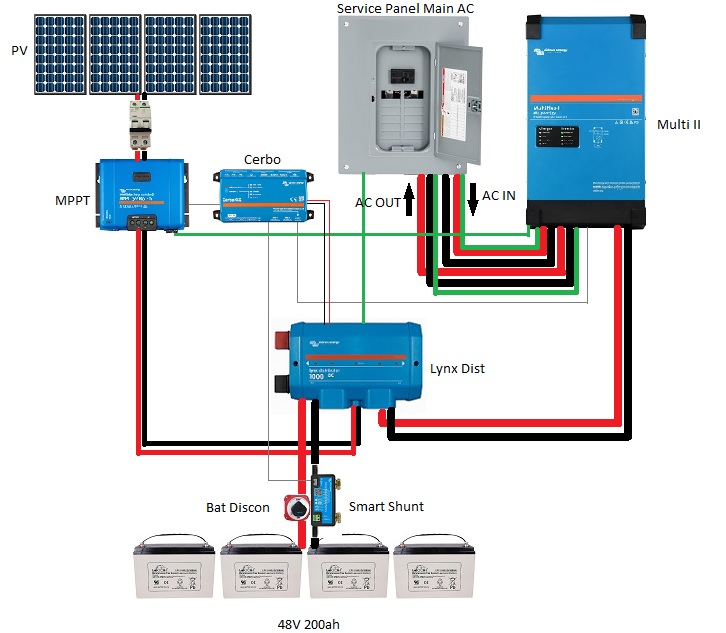Confused about ESS setup. Here's what I'm trying g to do...
When inverting, I want the CC to charge the bats (if needed) and provide the surplus to the inverter to power the AC loads (AC out). Since there is no AC Main present, if the AC load exceeds the PV output I assume the PV will be combined with load from the bats. Confused about the proper settings.
My system is: (48V)
Multiplus II 3000/35 120v
SSCC MPPT 150/45
1.4kw solar
Smart Shunt
Lynx Dist
200AH LA AGM (48V)


